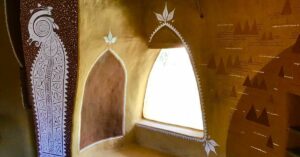Ditch Cement, Use Jaggery & Eggs to Build Homes! TN Engineer Shows You How
“Our ancestors built and lived in homes that served all their needs. These houses were well ventilated while we need ACs now. Almost three generations would end up living in these homes!” says home owner Jawahar C.
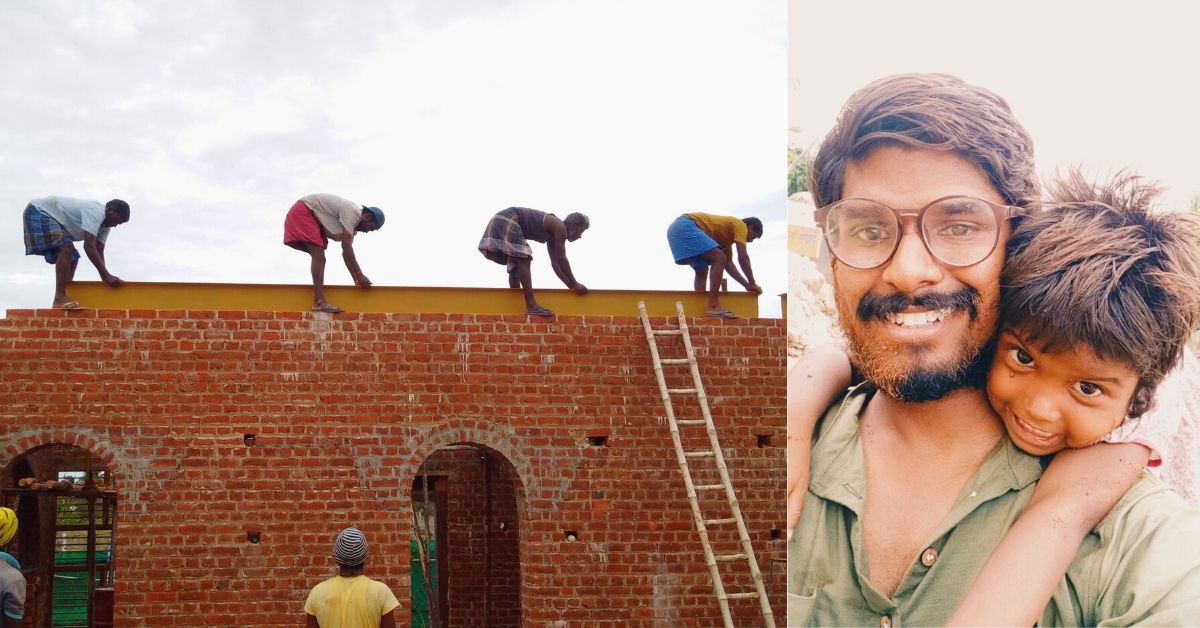
With people turning to earth-friendly materials like bamboo and mud in their quest to build cement-free, sustainable homes, there is no doubt that this trend in the construction is here to stay.
However, in my opinion, these materials seem incredibly conventional before a house built with jaggery and eggs!
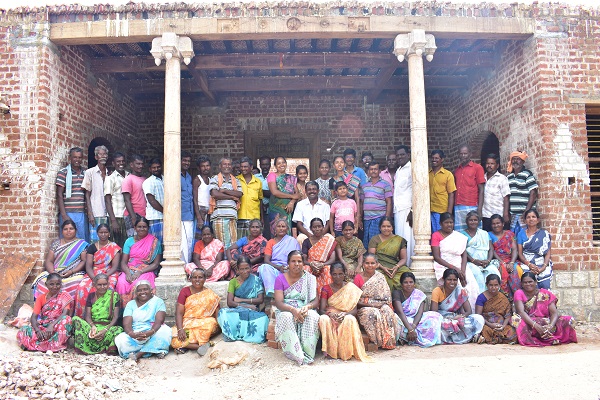
No, this is not a joke. Jawahar C, a resident of Vellakoil in Tamil Nadu’s Tirupur district, is currently supervising the construction of his 3200 sq ft home, which is being built using jaggery and egg whites.
“Our ancestors built and lived in eco-friendly homes, that were well-ventilated, sturdy, and served all their needs. I was deeply inspired by them and wanted to do something similar. Besides, construction activities can be extremely polluting. We are anyway facing a severe scarcity of natural resources, so why burden the earth further?” he mentions.
Jawahar was sure that he wanted to build an eco-friendly home, but when it came to its execution, he could only think of one person who could turn it into something tangible—his nephew, Aravind Manoharan.

The 27-year-old civil engineer runs a sustainable construction company called, ‘Pizhai Azhagu’ which he founded in June, 2018. Here the buildings are constructed using traditional techniques and locally available materials.
Building a home using jaggery and egg whites
“When I made up my mind to construct a home, I didn’t exactly think of the materials that would go into it—all I knew that it was going to be eco-friendly, and that Aravind would help me. It was his idea to speak to local masons and old people in the area, and get their input on the traditional techniques used to build homes there,” quips Aravind.
The duo managed to interview people and masons in the area, and the findings were quite unusual.
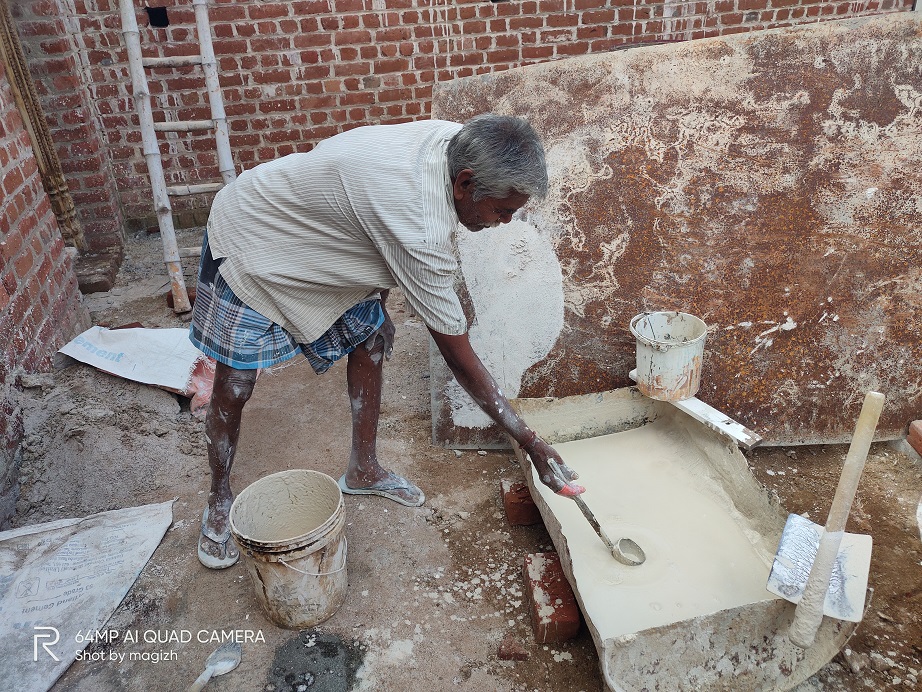
“Many of the people we interviewed had traditional courtyard style homes built using mud and ingredients like jaggery as a binding agent. They also informed us that they built these homes themselves, as there were very few construction companies at the time,” mentions Aravind.
Following this, he also spoke to several masons in the area who corroborated these findings.
“They told me that jaggery and egg whites served as great construction materials. Jaggery acts as a great bonding agent while the use of egg whites in the plaster gives the walls a polished look,” he explains.
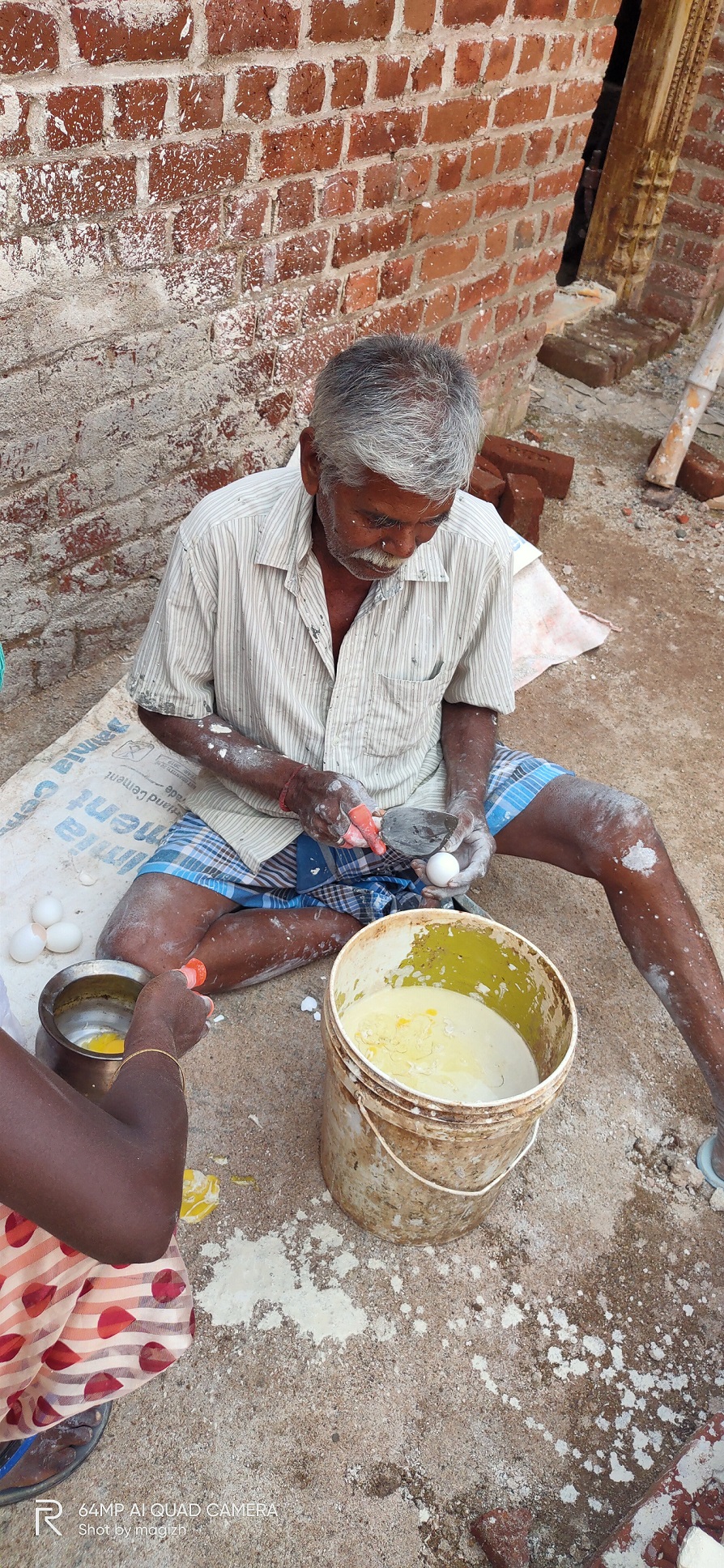
Aravind also emphasises that he did not possess the knowledge on how these materials were to be integrated in the construction process. So, he roped in some of the masons he had spoken with earlier, as they knew how to go about building the structure. These men, in turn, passed this information to the other masons working on the project.
Jawahar’s Sustainable Home
The construction of the house began in the last week of February, 2019 and it is expected to be ready by the end of this year.
The walls are being made using the conventional bricks but in place of cement, they made a mixture of lime mortar, sand, jaggery, crushed kadukkai (yellow myrobalan) and water. The plastering on the bricks is done in five layers and this helps in ensuring the breathability of the building with more oxygen inside.
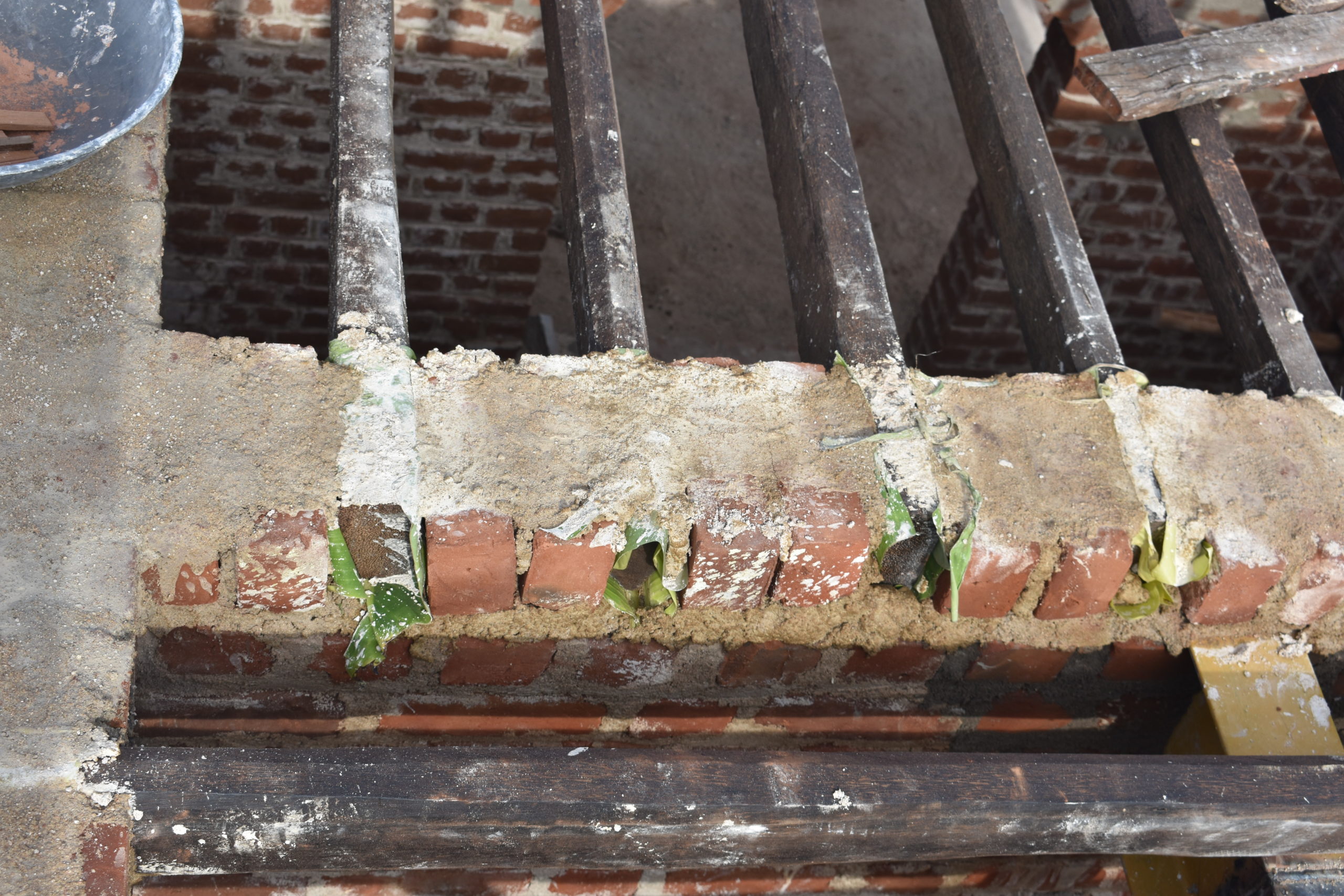
The first base of plastering is done using a mixture of lime, sand and water. The second and third layer is plastered using a mix of water, lime and crushed kadukkai. The fourth layer comprises lime, water and talcum powder while the fifth and the final layer, it’s a mix of lime and water again with egg whites.
Lime is again a material that was commonly used while building traditional homes in the region.
“The use of lime serves several purposes. Firstly, it keeps the house cool during summers and doesn’t let the heat pass out in winters,” states Aravind.
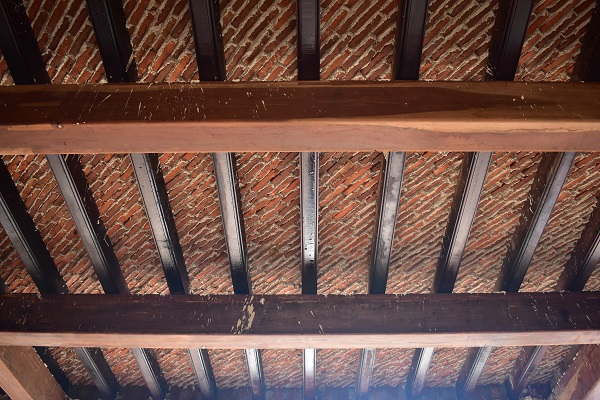
The roofs of the house use recycled wood that is sourced from the nearby Karaikudi old wood market. To ensure that the wood is safe from termite attack, plantain leaves or lotus leaves are placed between the wood and the bricks.
The duo is now waiting for bethamcherla stone to be used in the flooring with the lime, which will make the construction of the building complete.
Other sustainable buildings
While this might be the first time he is building a home made of jaggery and egg whites, Aravind has considerable prior experience in the construction of sustainable buildings.

“After completing a BTech in Civil engineering, I apprenticed for a year with a local builder in his village from whom I learnt a lot about designing buildings. Following this, I pursued a Masters in Interior Design from the International Institute of Fashion Design in Bengaluru. I returned to Vellakoil 2017 and one fine day, came across an eco-friendly home in the village. It was a Laurie Baker style building with exposed brick, roof tiles, and rat trap bond wall. It was quite hot outside but the house was incredibly cool inside. This really inspired me to explore how and where eco-friendly houses were built,” says Aravind.
Over a period of time, he developed a strong interest in traditional building materials, and decided to travel across the country to observe similar techniques. In West Bengal’s Jhargram he saw how people used local stones, bamboo and mud, while for roofing, they used terracotta tiles. In Jharkhand, he noticed that the tribes lived in huts made from mud.

Upon his return, he set up ‘Pizhai Azhagu’, which translates to ‘beauty of mistakes.’ Here, the focus is on region specific architecture, based on which they design and construct buildings.
“We have worked on several projects—and the most notable among them is the Damarugam Music School and Learning center in Coimbatore, which was built in architect Laurie Baker’s iconic style wit exposed bricks. The rat trap bond walls help in insulating the sound of drums. We have also used inclined bamboo frames in some sections instead of using bricks. For the roof, we’ve used pine tree wood along with reused Mangalore tiles. The floors have been made using green-oxide,” mentions Aravind.
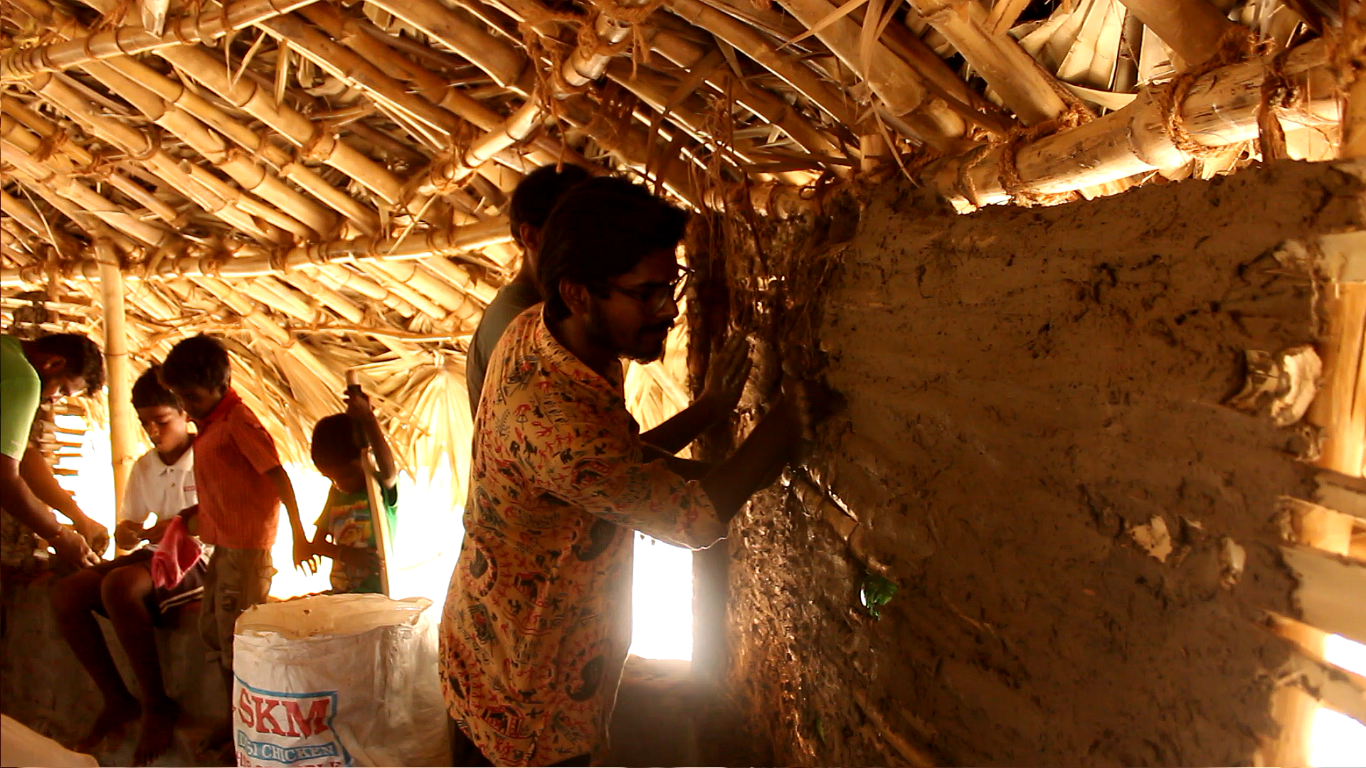
Having gained confidence after constructing such innovative buildings, what does Aravind hope for the future?
“I want to continue the same process of understanding region specific architecture and documenting how to construct them. It is the local masons who have all the knowledge and I am really thankful to them for sharing this knowledge with me. I hope to create more eco-friendly buildings in the future so that people have an environmentally friendly choice,” he says signing off.
You May Also Read: 10 Architects & Firms Building The Natural Sustainable Homes The Climate Needs!
(Edited by Gayatri Mishra)
Like this story? Or have something to share?
Write to us: [email protected]
Connect with us on Facebook and Twitter.
If you found our stories insightful, informative, or even just enjoyable, we invite you to consider making a voluntary payment to support the work we do at The Better India. Your contribution helps us continue producing quality content that educates, inspires, and drives positive change.
Choose one of the payment options below for your contribution-
By paying for the stories you value, you directly contribute to sustaining our efforts focused on making a difference in the world. Together, let's ensure that impactful stories continue to be told and shared, enriching lives and communities alike.
Thank you for your support. Here are some frequently asked questions you might find helpful to know why you are contributing?


This story made me
-
97
-
121
-
89
-
167




